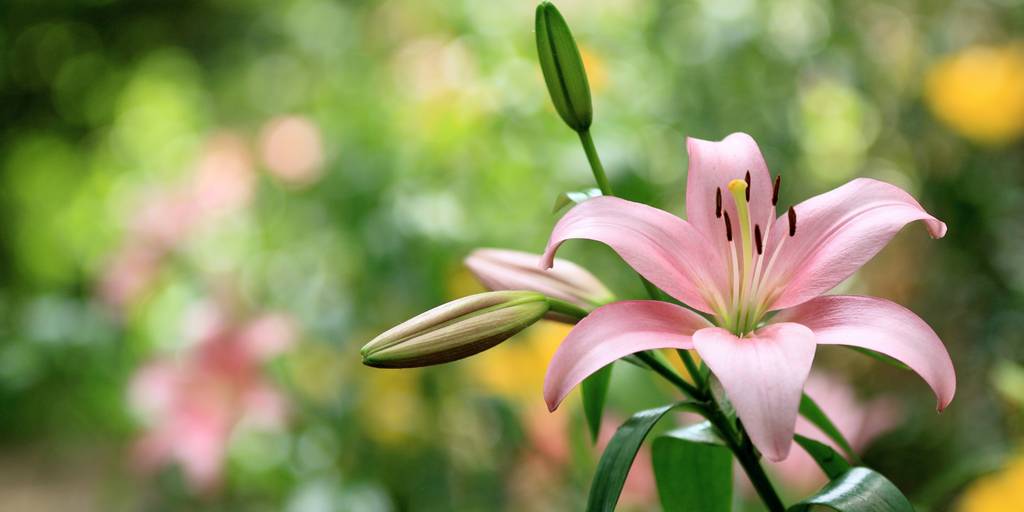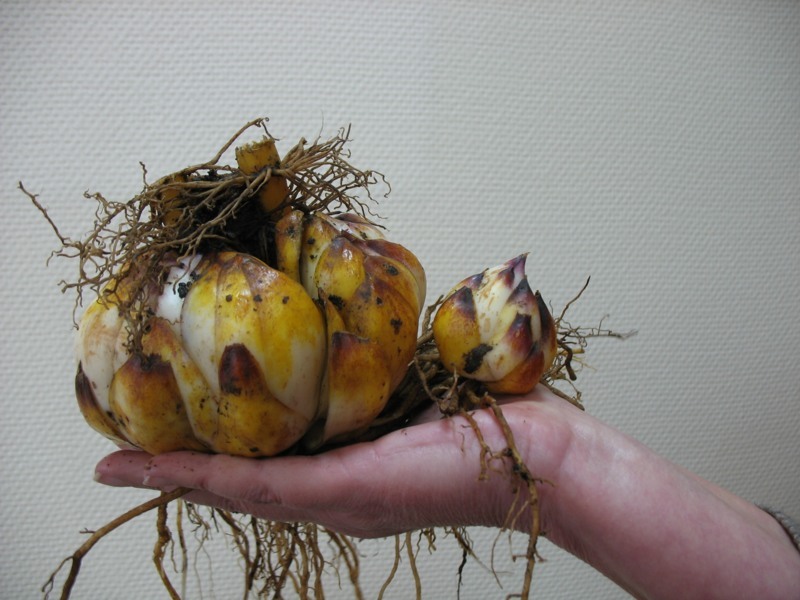Content:
Lily is undemanding to care, unpretentious in matters of cultivation. However, some varieties (oriental, American hybrids) are still not able to withstand the severe Russian frosts, as a result of which they stop blooming, often get sick and freeze out. Other varieties, on the other hand, easily adapt to the local climate and invariably delight with abundant flowering. One of the factors affecting the quality of growth and flowering is a competent approach to growing a flower, including the question of when to dig up lily bulbs and plant them in the ground.
When to dig the bulbs and plant
It is not advisable to dig up lilies every year. It is better to divide the formed bulbs every 4-5 years. Since not all types of flower can withstand the Russian cold, lilies are usually dug up and stored until spring. If the climate in the region is sparing, it will be enough to cover the flowers for the winter. If there is still a risk of losing the plant, it is better to play it safe and place the bulbs in the basement or in the refrigerator.
When to dig up lily bulbs depends on the particular flower variety. For example, LA hybrids are removed from the soil in mid-August, OT hybrids at the end, and Oriental and American hybrids in early September.
In addition, the following signs will help determine the right moment to dig up the bulbs:
- the flowering of lilies ended long ago;
- foliage has turned yellow or wilted.
If these phenomena have not been recorded by the end of September, then all flowers should be dug out for storage for the winter.
For most varieties, the procedure is carried out at the end of August - mid-September.
There are two main periods for transplanting lilies:
- Autumn (first decade of September). It is necessary that the plant, after planting, has time to take root and gain strength before the onset of cold weather. Only then will the lily be able to successfully overwinter.
- Spring. For this, the flowers are dug up in the fall season and stored throughout the winter. When a persistent warming occurs, lilies should be planted in open ground.
When to dig up lily bulbs after flowering
The need for this event is determined by the belonging of the lily to a particular variety, as well as the specific goal of the gardener. If Asian lilies and LA hybrids grow on the site, which form many bulbs, it is recommended to dig up the flower regularly. Otherwise, daughter nodules will sprout in the spring along with the mother bulb and begin to “compete” with her for water and nutrition. As a result, the lily bloom will noticeably weaken, become poorer.
The formed children are separated from the parent plant and placed in a place specially prepared for them (then they can be used for reproduction of the culture). Oriental and OT hybrids do not grow in such a volume, so there is no need to dig them out (except for preparation for transplanting to a new place).
Recommended times for digging out the bulbs:
- digging of Asian and LA hybrids is carried out from 15 to 20 August;
- OT hybrids are dug up from August 25 to September 1;
- with oriental hybrids, this procedure is carried out from September 1 to 5.
These terms regarding when it is better to dig up and plant lilies are very conditional, since they depend on the climate and weather conditions of a particular area.
Is it necessary and why to dig up lilies for the winter
It all depends on the location of the site, namely on the climatic conditions of the area. If the winters are not very cold with a lot of rainfall, lilies can be left in the ground for the winter, providing them with good shelter. But even in this case, the plants must first be dug up and then rooted in the soil, thereby distributing the young tubers and removing the old ones.
How to dig up lilies
As soon as the lilies have faded, their seed pods are removed, while the leaves and stems must be preserved, as they provide nutrition and the process of photosynthesis. When the time comes to dig up flowers, the ground part of the lily is cut off, the bulb is removed from the ground and the following actions are carried out:
- The soil is shaken off the bulbs.
- The stems are shortened, leaving 5 cm cuttings.
- The bulbs are checked for damage and decay and then thoroughly rinsed in clean water.
- Further within 30-40 minutes. they are kept in a special disinfection solution. It can be potassium permanganate or karbofos.
- Then the bulbs need to be dried. They are now fully prepared for storage.
How to store lilies before planting in the fall
A layer of peat is placed in a container, followed by an onion layer. Then the same procedure is repeated several times, while the last tier in the box must be made of peat.
There are several options for storing a container of lily bulbs. The general requirements for all are the following:
- so that dehydration does not occur, and the bulbs do not dry out, the room should not be too dry;
- high humidity is also harmful, as such conditions lead to the formation of mold and rot;
- the temperature should be stable, the optimal values are from 0 to 5 ° C.
- the storage place must be well ventilated;
Thus, the following are suitable as storage:
- refrigerator (the disadvantage of this option is that fruits can be stored simultaneously with lilies, and the ethylene they release makes it difficult for the bulbs to exchange gas);
- cellar, basement or garage (if they have suitable humidity and air temperature);
- balcony, loggia (on sunny days, the room may heat up, so it is important to ensure that the temperature does not rise above 0 ° C, otherwise the bulbs will begin to germinate).
If there is mold or rotten areas on the nodules, then they are placed in a solution of potassium permanganate. Then the planting material is dried and stored in another drier place.
Different experts may have different opinions as to when to dig up lilies, and whether to do it in principle. Here it is important to adhere to general recommendations, focus on the climatic features of the area, weather conditions and a specific plant variety. The combination of all these factors will determine the time when you should dig up the lilies. Only in this case it will be possible to avoid mistakes when growing, planting and transplanting plants.















